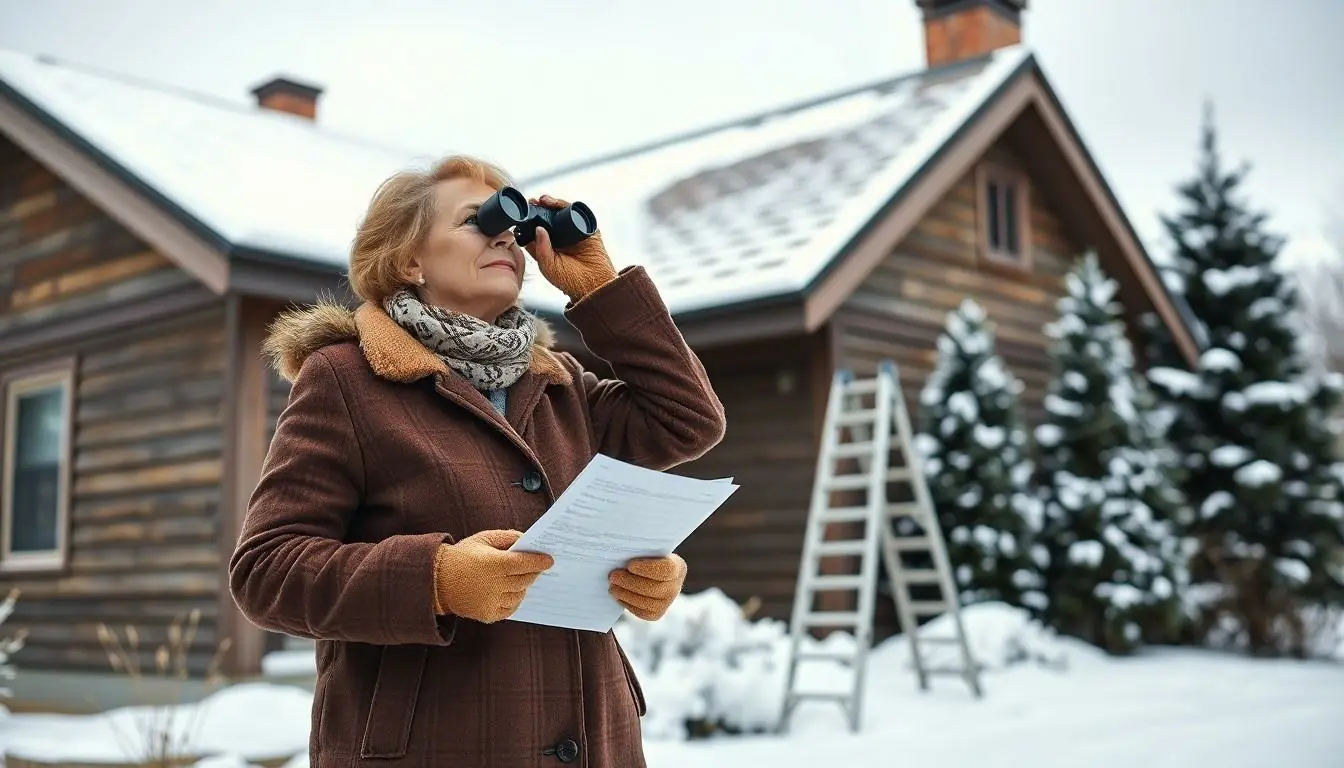As winter rolls in like a snowball on a downhill slope, homeowners everywhere face the annual showdown with icy drafts and pesky plumbing issues. It’s that magical time when cozy blankets become your best friends and the thought of a warm, well-maintained home is worth its weight in gold. But before you settle into hibernation mode, it’s time to tackle the winter home maintenance checklist—your secret weapon against the frosty foes lurking outside.
Table of Contents
ToggleImportance Of Winter Home Maintenance
Proper winter home maintenance protects against severe weather conditions. Homeowners avoid costly repairs by addressing potential issues before winter sets in. Ensuring efficient heating systems prevents high energy bills and discomfort.
Regular roof inspections identify leaks caused by snow accumulation. Insulating pipes prevents them from freezing and bursting during extreme temperatures. Clearing gutters keeps water from pooling and damaging roofs and foundations.
Maintaining outdoor pathways reduces the risk of slips and falls. Additionally, checking weather stripping around doors and windows minimizes drafts, enhancing energy efficiency.
Scheduling regular inspections for heating systems guarantees they operate safely and efficiently. This proactive measure ensures a warm indoor environment during frigid temperatures.
A well-maintained home promotes comfort and safety throughout winter. Prioritizing these tasks results in a more enjoyable living space. While some may overlook these maintenance tasks, the benefits far outweigh any initial costs. Adopting regular maintenance routines leads to long-term savings and a peaceful winter season.
Essential Winter Home Maintenance Checklist

Homeowners should focus on key maintenance tasks to ensure their properties remain cozy and protected from winter’s harshness. A proactive approach helps avoid issues that might arise during the colder months.
Inspecting The Roof
Regular roof inspections play a vital role in maintaining home integrity. Inspect shingles for missing or damaged areas, as these can lead to leaks. Check flashing around chimneys and vents for signs of wear. Ice dams often form on eaves, so ensure adequate insulation and ventilation in the attic to prevent this problem. Addressing these issues promptly can save homeowners from costly repairs down the line.
Checking Gutters And Downspouts
Maintaining gutters and downspouts ensures proper drainage and prevents water damage. Clear leaves and debris that accumulate during fall, as clogged gutters can lead to ice buildup and damage. Examine downspouts to ensure they direct water away from the home’s foundation. Consider extending downspouts to improve water flow during winter storms. Performing these tasks will minimize the risk of structural issues over time.
Sealing Windows And Doors
Sealing windows and doors stops drafts and enhances energy efficiency. Inspect weather stripping around each entry point for signs of wear, and replace any damaged sections. Caulk gaps and cracks to further reduce heat loss. Homeowners benefit from using energy-efficient curtains or thermal blinds to keep warm air inside. Prioritizing these measures promotes a comfortable living environment while reducing heating costs.
Preparing The Heating System
Ensuring a reliable heating system is vital for winter comfort. Homeowners must focus on specific tasks to promote efficiency and safety during colder months.
Changing Filters
Filters require regular changing to maintain optimal airflow. A new filter improves air quality and enhances system efficiency. Schedule changes every one to three months, especially for homes with pets or allergy concerns. A clean filter prevents strain on the heating system, reducing energy bills. Selecting the right filter type, such as HEPA, can capture more particles, benefitting health and comfort.
Scheduling Professional Maintenance
Professional maintenance plays a crucial role in heating system performance. Scheduling an inspection ensures the system operates efficiently and safely. Technicians identify potential issues before they escalate, providing peace of mind. Regular check-ups can extend equipment life, saving costly repair expenses in the long run. Homeowners should aim for annual tune-ups before the heating season begins, allowing time for necessary repairs or adjustments.
Protecting Plumbing Systems
Protecting plumbing systems during winter is crucial to prevent costly repairs and maintain comfort. Addressing specific areas strengthens the overall integrity of a home’s plumbing.
Insulating Pipes
Insulating pipes effectively reduces the risk of freezing. Foam sleeves or heat tape offer excellent protection for exposed and vulnerable areas. Areas close to exterior walls typically require the most insulation. Pipes in unheated spaces like basements or attics also benefit significantly from proper insulation. Insulation materials maintain warmth within pipes and minimize the chance of bursting. Homeowners can check for existing insulation and add it where needed to ensure comprehensive coverage.
Draining Outdoor Faucets
Draining outdoor faucets before winter is essential for preventing freeze damage. Homeowners should turn off indoor shut-off valves linked to outdoor spigots. After shutting off the valves, draining water from the faucets prevents pressure buildup in pipes. It is advisable to leave the faucet open to ensure complete drainage. Storage of hoses and removal from faucets prevents water accumulation. This simple yet effective task safeguards plumbing and reduces the risk of expensive repairs.
Preventing Ice Dams
Preventing ice dams requires proactive measures. Ice dams form when melting snow refreezes at the roof’s edge, causing water to back up under shingles. Managing this issue involves a few effective strategies.
Clearing Snow From Roofs
Clearing snow from roofs is essential for preventing ice dams. Homeowners should remove snow accumulations after significant storms. This task can be done using a roof rake, which allows safe access to the roof without causing damage. Aim to clear snow in layers, targeting vulnerable areas first. Regularly removing snow prevents the trap of melting and refreezing water. Inspecting the roof after clearing can also identify any damaged shingles or potential leaks.
Using Heat Cables
Using heat cables effectively prevents ice dams. Homeowners can install these cables along the roof’s edge to melt snow and ice. These cables generate heat, keeping roof edges and gutters clean. Installation typically occurs before the winter season to ensure readiness. For best results, arrange cables in a zigzag pattern for even coverage. Monitoring cable operation during winter ensures they function correctly, diminishing the risk of ice dam formation.
Winter home maintenance is essential for ensuring comfort and safety during the colder months. By following a comprehensive checklist, homeowners can effectively prevent issues like frozen pipes and ice dams. Regular inspections and maintenance not only protect the home but also save money on costly repairs down the line.
Taking proactive steps like insulating pipes and maintaining heating systems creates a warm living environment. It’s important to prioritize these tasks to enjoy a cozy winter without unexpected disruptions. With careful planning and attention, winter can be a season of comfort rather than concern.







